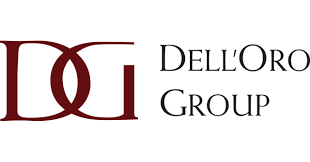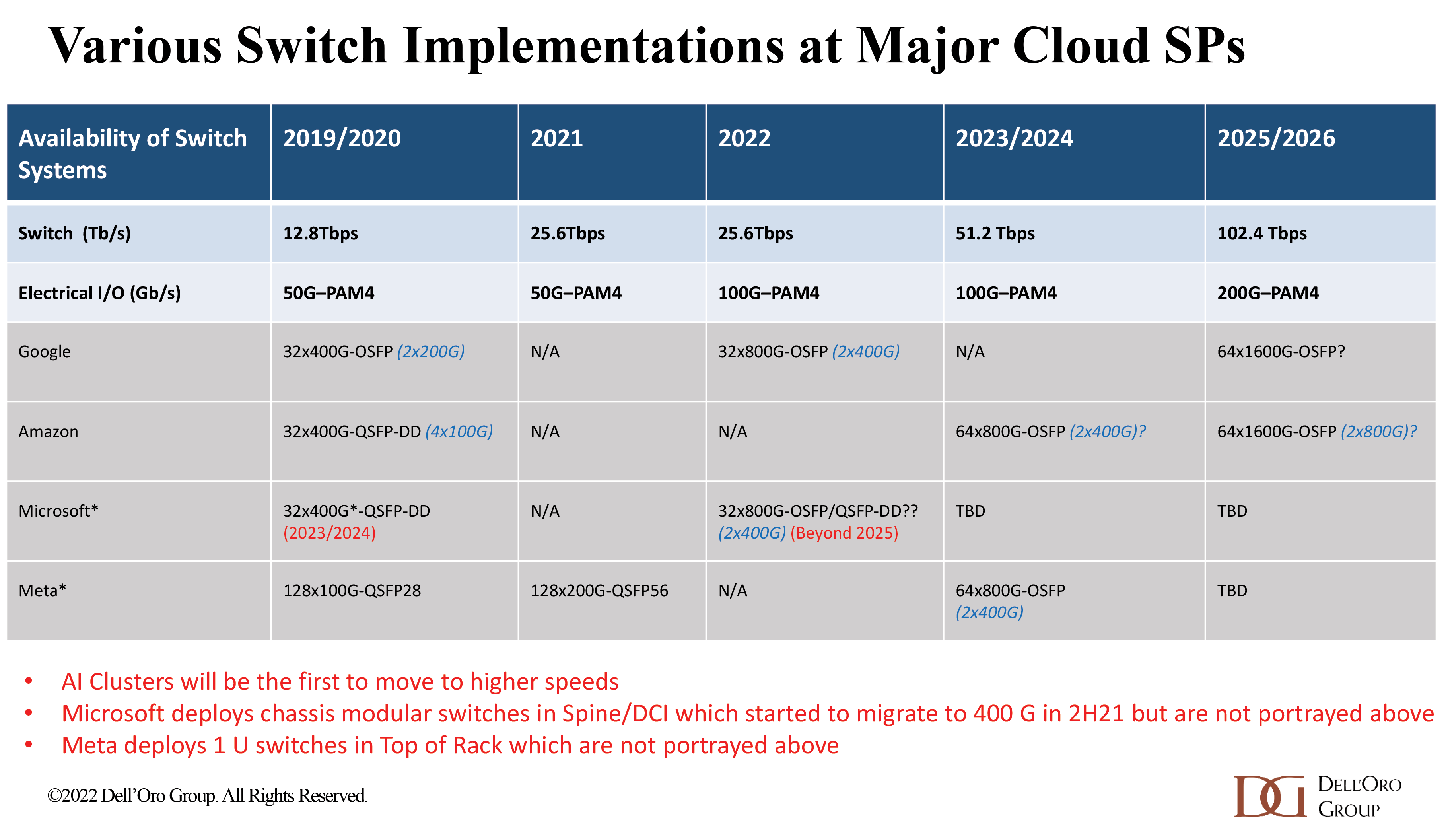
This year, the OCP Open Compute Project (OCP) Global Summit—held in San Jose, California, from October 18 to 20—marked its 11th anniversary, with a record number of attendees from a very diverse set of companies that are either supplying the technology or consuming it; such as cloud providers, colocation providers, telco providers, and enterprises. We very much enjoyed seeing in person the many clients of ours who were present.
Before zooming in on the technology segment that is close to my heart, networking, I would like to share some overall observations about the show.
First, it is worth noting that when OCP started more than 10 years ago, it was mostly centered around Meta (formerly known as Facebook). Microsoft and Google joined in 2014 and 2016, respectively. This year, the number of contributions and talks presented by Google was remarkable, as will be discussed in other blogs.
Second, the number of topics explored during the summit was significantly greater than was the case for prior events. It’s no longer just about compute, storage, and networking. This time, we heard about accelerators, CXL memory, rack and power supplies, data center facilities, optics, security, among other topics. We also heard for the first time about sustainability. That is because the slowing of Moore’s Law is hindering improvements in CPU performance, power consumption, memory, and storage cost efficiencies. Innovation at other layers of the stack is therefore needed in order to circumvent this slowdown.
At Dell’Oro Group, we track many of the areas covered at the OCP conference. In a series of future blogs, you will hear from my colleagues Baron Fung (who tracks servers, storage, and data center capex) and Lucas Beran (who tracks data center physical infrastructure) about their key takeaways from the show.
In this blog, which focuses mostly on networking, I’m going to talk about two topics: SONIC adoption and high-speed optics.
- SONIC adoption: As a reminder, SONIC is an open source network operating system (NOS) based on Linux. It was first developed by Microsoft, but then got a lot of contributions from the community. SONIC is key in order to enable network disaggregation outside the hyperscalers which were able to develop their own NOS. We heard a number of SONIC talks from different stakeholders in the ecosystem, from chip suppliers (such as Broadcom) to system vendors (such as Ragile Networks) to end users (such as Microsoft and eBay) and even enterprises seeking to deploy SONIC in edge use cases outside the data center (such as Target). While it is very encouraging to see the number of activities and features contributed to SONIC, we have been even more encouraged by the emergence of new start-ups whose mission is to solve the supportability issue of SONIC. We had a chance to meet in person with some of these startups (such as Aviz Networks and Hedgehog) and learned a lot about significant developments, which will be incorporated into our upcoming Data Center Switch Five-Year Forecast Report.
- High-speed optics: At OCP this year, a new track was added to the schedule, with a special focus on optics. The sessions within this new track were very well attended, which came as no surprise to us, given the list of speakers representing various key players in the industry, including Alibaba, Arista, Broadcom, Cisco, Intel, Meta, Microsoft, Nvidia, to name just a few. I also had the opportunity to give a presentation as part of this track. The purpose of my talk was to provide an overview of the hyperscale data center switch market, with a special emphasis on each hyperscaler’s roadmap for the next five years in terms of chip generation and switch implementation as shown in the chart below.

A few of the hot topics discussed during the show and the optics track centered around the ongoing battle between OSFP and QSFP-DD form factors and also around the potential of Co-packaged Optics (CPOs) to solve cost and power issues that keep rising as network speeds continue to increase.
- OSFP vs. QSFP-DD: There seems to be more preference for the OSFP form factor when moving to 800 Gbps. As shown in the chart above, both Amazon and Meta are currently deploying QSFP/QSFP-DD but most likely will, in the near future, deploy OSFP with next-generation speed. However, Microsoft is still in checks. In fact, on the show floor, Microsoft was showcasing 1.6 T QSFP-DD. The major advantage of QSFP-DD is backward compatibility. Therefore, some cloud SPs such as Microsoft are trying to figure out how much more mileage they can get out of QSFP-DD before making the change to OSFP.
- CPOs for network (switch-to-switch) connectivity: It appears that the timeline of adoption of CPOs is being delayed by a couple of years at major hyperscalers, namely Meta and Microsoft. We believe that, in order for CPOs to reach volume adoption, they have to provide significant power and cost savings compared to pluggable optics. Additionally, time-to-market, multi-vendor support, and serviceability issues are also among major requirements for CPOs to achieve mass adoption. Based on current technology development, it appears that pluggable optics will remain the form factor of choice even at 102.4 Tbps chips. Nonetheless, we recognize that the learning curve for CPOs is very steep. We therefore expect some hyperscalers to start testing and deploying CPOs as part of that process. In the meantime, we expect CPOs to be first deployed in other applications such as chiplet connectivity for compute interconnect, as these are internal connections that do not even require Ethernet standards.
To learn more about our findings and reports, you are invited to contact us at dgsales@delloro.com
About Sameh Boujelbene:
Sameh Boujelbene joined Dell’Oro Group in 2011 and is currently responsible for the Ethernet Campus Switch, and Ethernet Data Center Switch market research. While at the firm, Ms. Boujelbene has expanded her research programs to ensure they are evolving to address datacenter interconnect, AI/ML workloads, and digital transformation. Ms. Boujelbene has published articles and has been cited in various industries and trade publications. Ms. Boujelbene is a frequent speaker at industry conferences, and events.